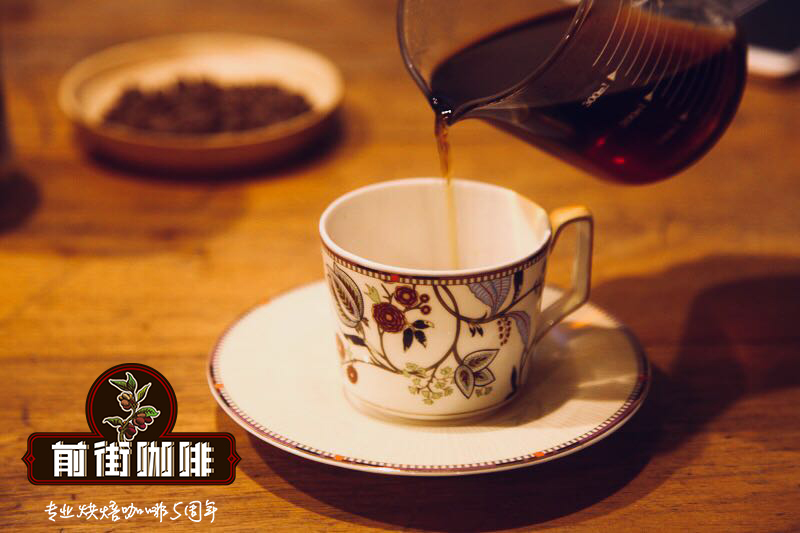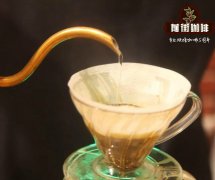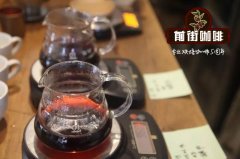How to drink Fine Coffee the correct way of tasting Fine Coffee how to get started with novice

Professional coffee knowledge exchange more coffee bean information please follow the coffee workshop (Wechat official account cafe_style)
No matter international chain brands or other independent brands of cafes, when we have a cup of boutique coffee, I believe many consumers do not know how to distinguish the quality of a cup of coffee.
So let's take a look at the international standards for espresso production:
As a consumer or a person who appreciates this cup of coffee, how can you judge whether this cup of coffee is standard or of high quality?
How would you like a boutique coffee?
1. Smell the aroma-the aroma of coffee is full, rich and refreshing.
2. Taste-balanced, slightly sweet, bitter and shallow, no astringency, clean finish and long aftertaste.
3. No defects-no cardboard, diesel, aged vinegar, coke paste, smoke and other defects (flavor wheel).
4. the quantity is suitable and the temperature is suitable. A correct cup of coffee, hot full aroma, delicate and supple taste, gradually cool at room temperature, although there are changes in flavor and taste, there will be no defects, hot and cool contrast consistency, stable flavor.
The "ups and downs, bitterness and saltiness" we experience in our daily life can actually be found in coffee.
The acid in coffee is a kind of fruit acid. at present, almost all the fine coffee on the market retains the sour flavor of high-quality coffee. In principle, Arabica coffee has a certain degree of fruit acid, but these fruit acids, when roasted to a certain extent, will crack, and the acid will gradually convert and disappear. Therefore, to some extent, coffee is medium-grade to sour, and the sour taste is more supple, elegant, and can stimulate Shengjin, which is one of the excellent quality of coffee.
When the mature coffee fruit is picked, the coffee peel, pulp and pectin contain high fructose. The longer the illumination time, the longer the growing period and the higher the maturity, the higher the sugar content in the coffee. In pure black coffee, there is only bitterness and no acid, one is that the roasting is too deep, which conceals the sweetness of the coffee itself, the other is that the sugar is not transformed and retained well, and the chlorogenic acid and tannin in the coffee are not decomposed, so that the coffee is only astringent, sharp or pure bitter.
It is inevitable that there is a certain bitterness in the coffee. In the previous article, we have specifically explained the bitterness of coffee. But when we pick up a cup of coffee, this cup of coffee must not only be bitter, even if it is fragrant dark chocolate bitter. A cup of high-quality coffee that is roasted correctly and extracted properly, the ideal state is a balance of sour, sweet and bitter, that is to say, it can not only taste high-quality sour taste, but also have a good return to sweet taste, and although it has a refreshing bitter taste, it can soon be replaced by acid-stimulated sweet. The representative of balanced flavor is undoubtedly Jamaican Blue Mountain Coffee.
So, will there be spicy and salty flavor in the coffee? A lot of people may not know it. Even if there is, it may also be covered up by the more prominent bitterness. For example, the Ethiopian sun Harald, light baked state, after extraction, it is easy to appear as spicy ginger flavor. Although the bird of paradise in Papua New Guinea is a blue mountain species, the salty taste of sea salt or sea water is obvious in the aftertaste.
As for the description we often hear about the thickness and astringency of fine coffee alcohol, relatively speaking, the thickness of coffee is relatively easy to understand, there are many soluble substances in coffee, and the thickness of alcohol is high, such as the difference between 38-degree liquor and 52-degree liquor, and the difference between pure water and mineral water. The astringency in coffee is actually the tactile feeling of the tongue coating to the liquid, while the development of the coffee is incomplete when roasting, and the tannic acid is not cracked. When drinking, it is easy to combine with the human body protein in the saliva of the mouth to form a granular substance, which forms a rough touch on the surface of the tongue coating.
How would you like your espresso?
The core of any cup of espresso must be the outstanding taste of the coffee.
1. American coffee, the aroma of the coffee is obvious, and the coffee has a good balance of sour, sweet, bitter and mellow (that is to say, it will not be particularly bitter, particularly sour, or particularly sweet and greasy because of the addition of too much sugar).
2, milk coffee, should be coffee aroma and milk flavor fusion degree, milk foam dense and delicate, no raw milk fishy smell, no miscellaneous smell, refreshing and sweet mouth after drinking.
3, flavor coffee or creative coffee, as long as it is called coffee, must be very obvious coffee taste, aroma, taste can be directly judged.
Finally, I would like to remind you that please correct a misconception-scorched paste, not the correct flavor! Bitter is not the only taste of coffee! Any properly roasted boutique coffee will not only be bitter, but also will not have a burnt taste. Any coffee with a burnt taste is caused by improper roasting. For example, experienced Japanese roasting, coffee beans have reached the end of the second explosion, drink only flavors such as dried spices, there will be no burnt experience.
Those big international chains are blind and often like to fool consumption with burnt coffee, or even make up a set of mismatched theories to confuse the public. But because of the use of low-quality commercial beans, the defect rate is relatively high, in order to cover up the defective flavor of coffee and maintain the stability and consistency of the product, French and Italian roasting is adopted.
Important Notice :
前街咖啡 FrontStreet Coffee has moved to new addredd:
FrontStreet Coffee Address: 315,Donghua East Road,GuangZhou
Tel:020 38364473
- Prev

What kind of coffee beans do you choose to brew coffee by hand? the flavor of hand-brewed coffee is different from that of washed coffee beans.
Professional coffee knowledge exchange more coffee bean information Please follow the coffee workshop (Wechat official account cafe_style) We often hear that there are water washing, half-sun washing, honey treatment and so on. Among them, sun and water washing are the two most common treatment methods. Even beans from the same producing area may be treated by washing and tanning respectively. This is also
- Next

How is Yunnan Coffee quality and Flavor? is Yunnan Coffee popular abroad? how do you rate it abroad?
Professional coffee knowledge exchange more coffee bean information Please follow the coffee workshop (Wechat official account cafe_style) some people who don't know Yunnan coffee beans at all are judging how Yunnan coffee beans can't work and how they can't go abroad. Is your inferiority complex already engraved in your bones? Think that what is bad at home is that you can't go out of the country? Do you know how many coffee beans there are in Yunnan in a year?
Related
- Beginners will see the "Coffee pull flower" guide!
- What is the difference between ice blog purified milk and ordinary milk coffee?
- Why is the Philippines the largest producer of crops in Liberia?
- For coffee extraction, should the fine powder be retained?
- How does extracted espresso fill pressed powder? How much strength does it take to press the powder?
- How to make jasmine cold extract coffee? Is the jasmine + latte good?
- Will this little toy really make the coffee taste better? How does Lily Drip affect coffee extraction?
- Will the action of slapping the filter cup also affect coffee extraction?
- What's the difference between powder-to-water ratio and powder-to-liquid ratio?
- What is the Ethiopian local species? What does it have to do with Heirloom native species?

